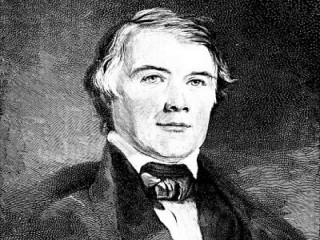
James Pollard Espy biography
Date of birth : 1785-05-09
Date of death : 1860-01-24
Birthplace : Westmoreland County, Pennsylvania
Nationality : American
Category : Science and Technology
Last modified : 2011-12-21
Credited as : meteorologist, developed a convection theory of storms, known the Storm King
1 votes so far
He became meteorologist to the War (1842) and Navy (1848) departments and developed the use of the telegraph in assembling weather observation data by which he studied the progress of storms and laid the basis for scientific weather forecasting.
The youngest of ten children, James Pollard Espy trained as an attorney and worked as a school teacher, but gained recognition as an early student and forecaster of weather. He used buckets of water and thermometers to determine the "dew point", established a volunteer network of weather watchers in Pennsylvania, and oversaw the network's expansion and adoption of the telegraph in 1855. He prepared weather forecasts for the US Navy, and his book The Philosophy of Storms provided a landmark scientific description of how thunderstorms form, and earned him the nickname "Storm King" in media accounts of his work.
A member of Philadelphia's Franklin Kite Club, Espy used kites to determine the height of cumulus clouds, and detected updrafts below the cloud bases. From data collected in kite flights, he was able to establish a relationship between cloud base heights and surface temperatures and dew points. He was named the federal government's first official meteorologist in 1842, twenty-eight years before the establishment of the US Weather Bureau. He was the first scientist to accurately describe how clouds form. He also noted that prairie fires or forest fires often preceded thunderstorms, and proposed that droughts could be ended by lighting forty acres of woodlands aflame once weekly at twenty mile intervals.
At the age of 37 he married his 16-year-old cousin. They had no children. In January 1860, he suffered a stroke at his niece's home; paralyzed, he died a week later.
Author of books:
-The Philosophy of Storms (1841)
-The Human Will: A Series of Posthumous Essays on Moral Accountability, the Legitimate -Object of Punishment, and the Powers of the Will (1860)
















